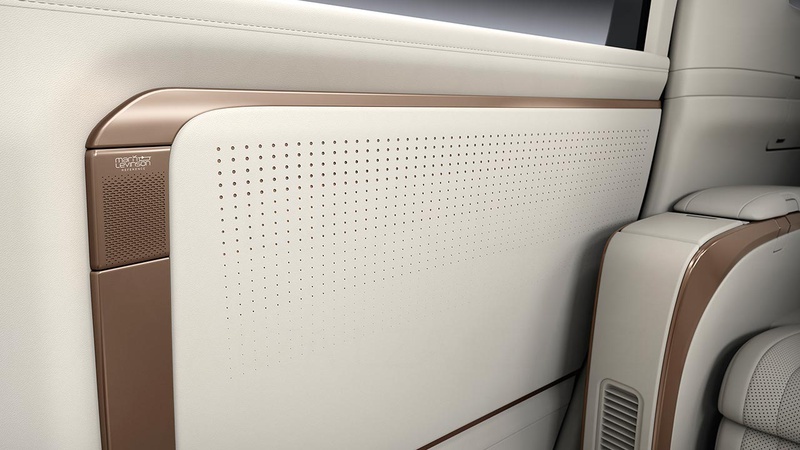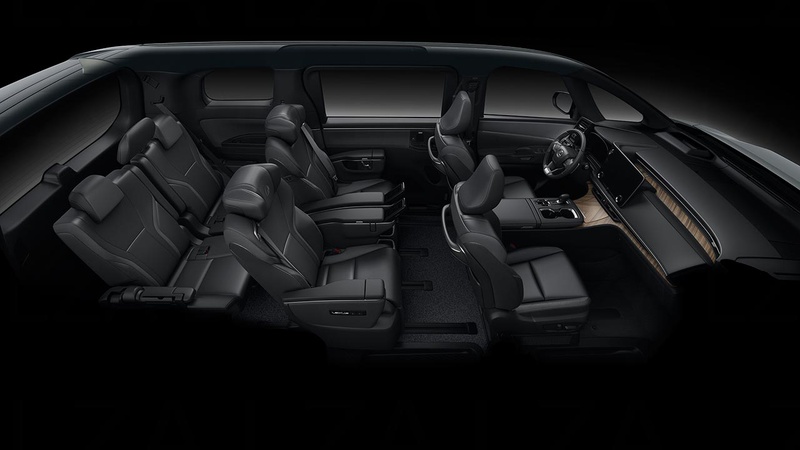Featuring a gargantuan body-colored front grille, the 2024 LM has been fully redesigned and has lost the rear badge in favor of prominent "LEXUS" lettering. Those 19-inch wheels look rather small, especially since the new model has a larger body: 201.7 inches (5125 millimeters) long, 74.4 in (1890 mm) wide, and 77 in (1955 mm) tall. It's 3.1 in (80 mm) longer, 1.5 in (40 mm) wider, and 0.4 in (10 mm) taller than its predecessor while carrying over the 118.1 in (3000 mm) wheelbase.
It's a true minivan with sliding doors and a gargantuan interior offered in a three-row layout with six or seven seats. There's also a swanky two-row configuration with only four seats, meant to be used as a chauffeur-driven MPV. The only thing bigger than the spindle grille is an enormous 48-inch display in front of the independent rear seats of the two-row model. Lexus says it's not just for entertainment but also for online meetings.
In the same area, there's a refrigerator, storage spaces, and a privacy glass with two-level dimming. Passengers relaxing in the back can create a cozy atmosphere by playing with the 64-color ambient lighting that comes with 14 built-in themes and 50 custom hues. There's also a retractable leather-wrapped table stored inside the armrest when not in use.














2024 Lexus LM
One neat feature is the infrared sensor mounted on the upper center portion of the partition. It's able to detect the temperature of the rear-seat occupant's face, chest, thighs, and lower legs. It also measures how cold or hot the windows, trim, and ceiling areas are since areas these are impacted by ambient temperature. Once the math is done, the AC is automatically adjusted for utmost comfort.
Lexus doesn't go into details about the powertrains, only saying buyers will be able to get the 2024 LM with a turbocharged 2.4-liter hybrid powertrain and a 2.5-liter hybrid. The minivan showcased in Shanghai has 225/R19 tires but the global model will also be offered with smaller 17-inch wheels and 225/65 R17 rubber. Torsional rigidity is up by 50 percent compared to the first-gen model, while an adaptive suspension uses a frequency-sensitive piston valve in the shock absorber to iron out road imperfections.
Source: Lexus

